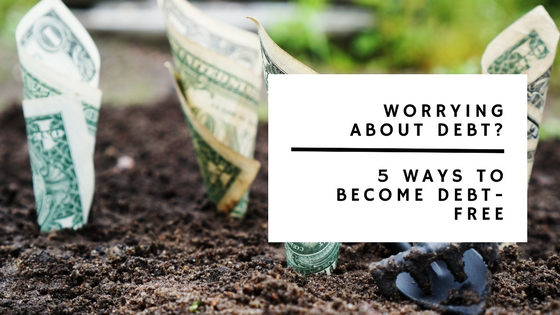According to a recent study, Americans are leaving behind around $62,000 worth of debt. This number is overwhelmingly high and shows there’s a serious problem facing people living in the United States. Far too many people are in debt, for various reasons. Some of the biggest culprits are student loans, credit card debt, and mortgage debt. For most people, garnering some amount of debt is basically unavoidable, but you can keep it to a minimum and pay it off responsibly. No matter how far you are in debt, here are some tips you can take advantage of and start repairing your financial life.
Create an emergency fund
While first saving before paying on debt may seem counterproductive, it’s a step you must take. Create at least a month or two of savings that’s enough to cover your monthly payments. This way, if an emergency ever arises, you’ll have money to still cover your debts and make payments that month. An emergency fund gives you peace of mind and allows you to fully focus on getting rid of debt.
Make a stable budget
Before you begin tackling debt, make sure you set a realistic budget. Evaluate your lifestyle and monthly expenses and plan a budget that takes into account what you need to spend money on each month. Identify areas of your lifestyle where you can cut back; avoid going out to eat as much, buy cheaper groceries, or downsize to a smaller apartment. Avoid going on an expensive vacation or buying lots of new clothes or a car. Once you make your budget, stick to it, and avoid unnecessary spending.
Avoid more debt
Once you establish your budget, avoid getting into more debt. Do not use credit cards and only purchase something if you actually have the funds to pay for it. Debt for school or a mortgage are sometimes unavoidable, but do all you can to minimize the amount you’re paying.
Craft a solid plan
After you establish a budget, take a good, long look at the debt you currently have. See if you can consolidate or refinance anything to lower your interest rates. Determine how you want to pay off your debt, whether it’s the highest interest rate first, the lowest total amount of loan, or some other way that works for you. Put as much extra money toward your debt as you can each month. You might have to live simply for a few months or even years, but it’ll be worth it to be debt-free.
Find a side hustle
Sometimes, you just don’t make enough money to pay more on your debts or cover all your expenses. If you’re at this point, it’s time to look into getting a second job or some kind of side hustle. Start a blog about something you’re passionate about, have a yard sale, get a second job, or do some freelance work online. Find any way you can to generate more money to put toward your debt.
